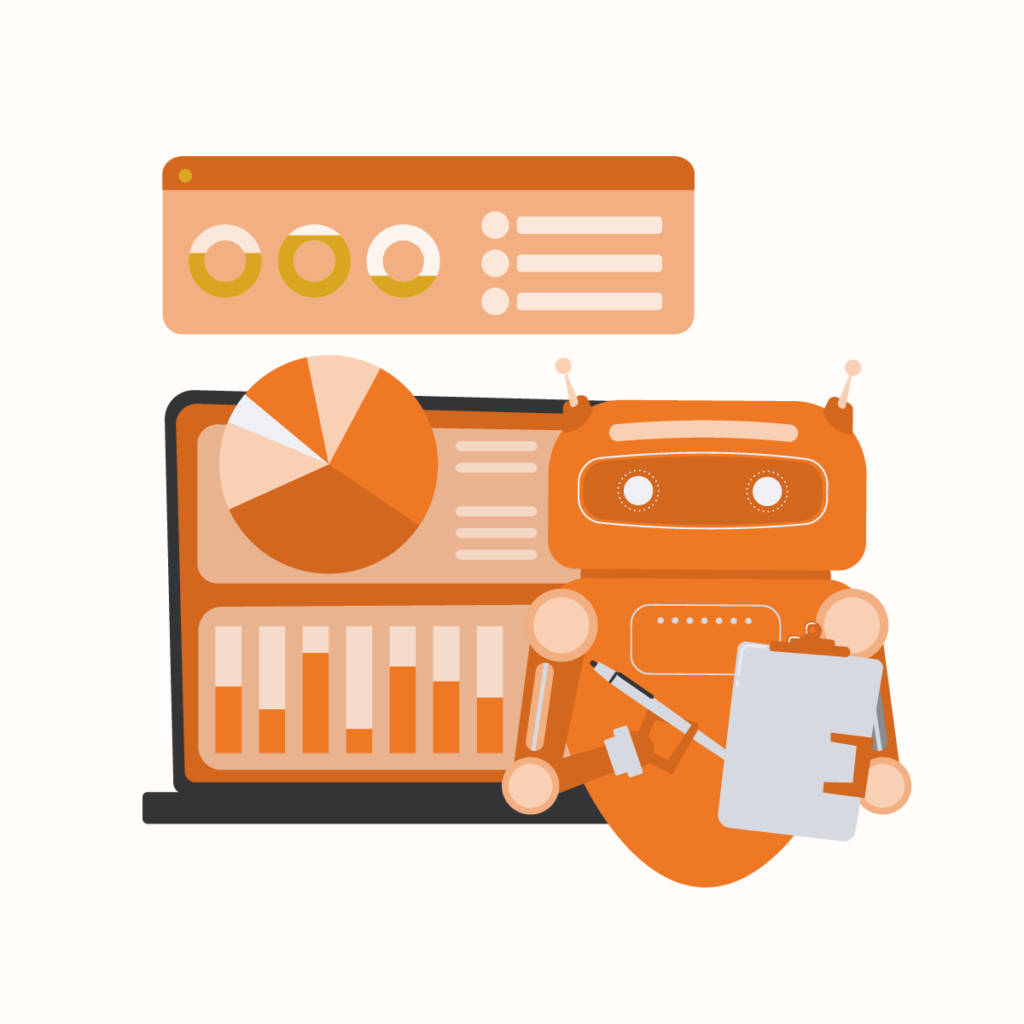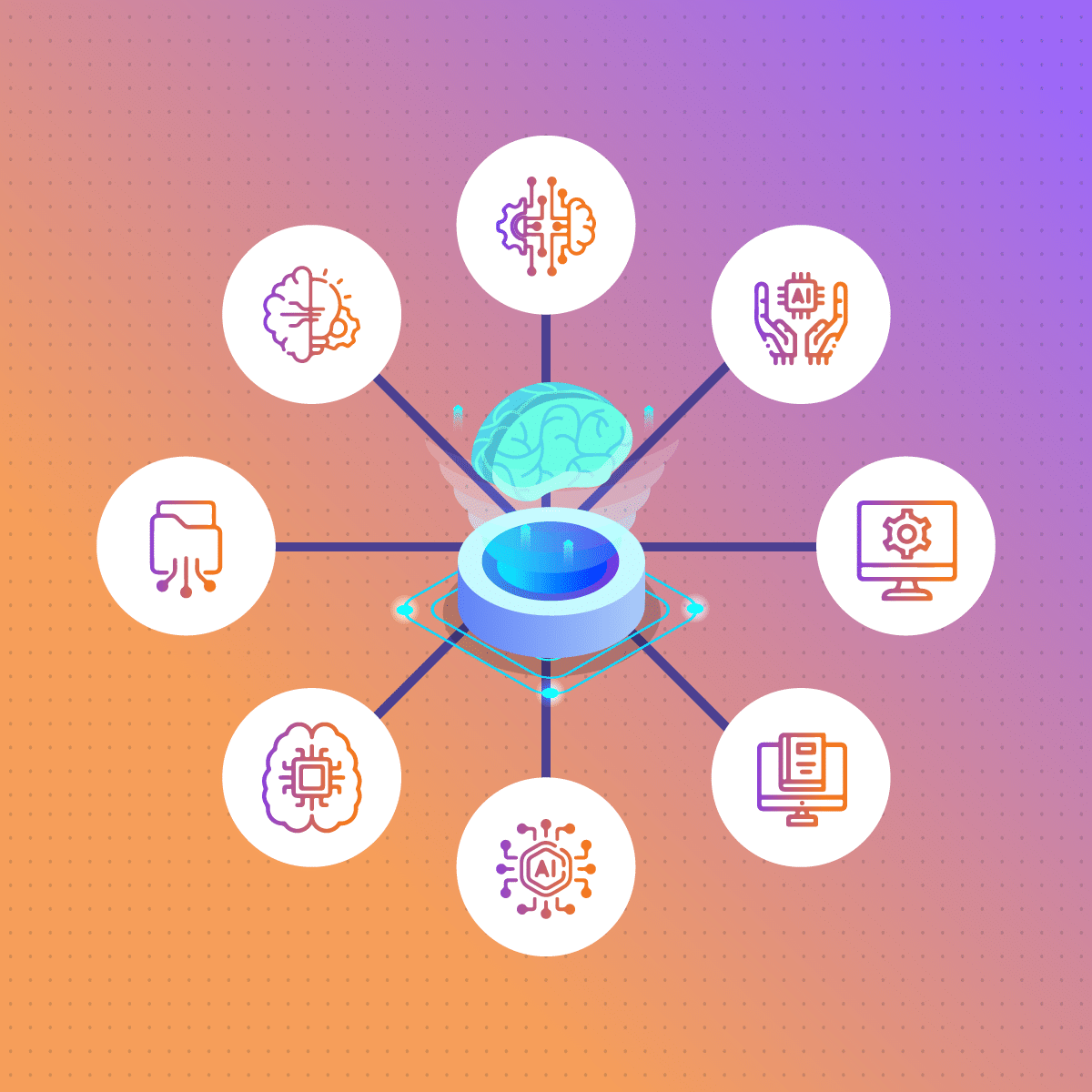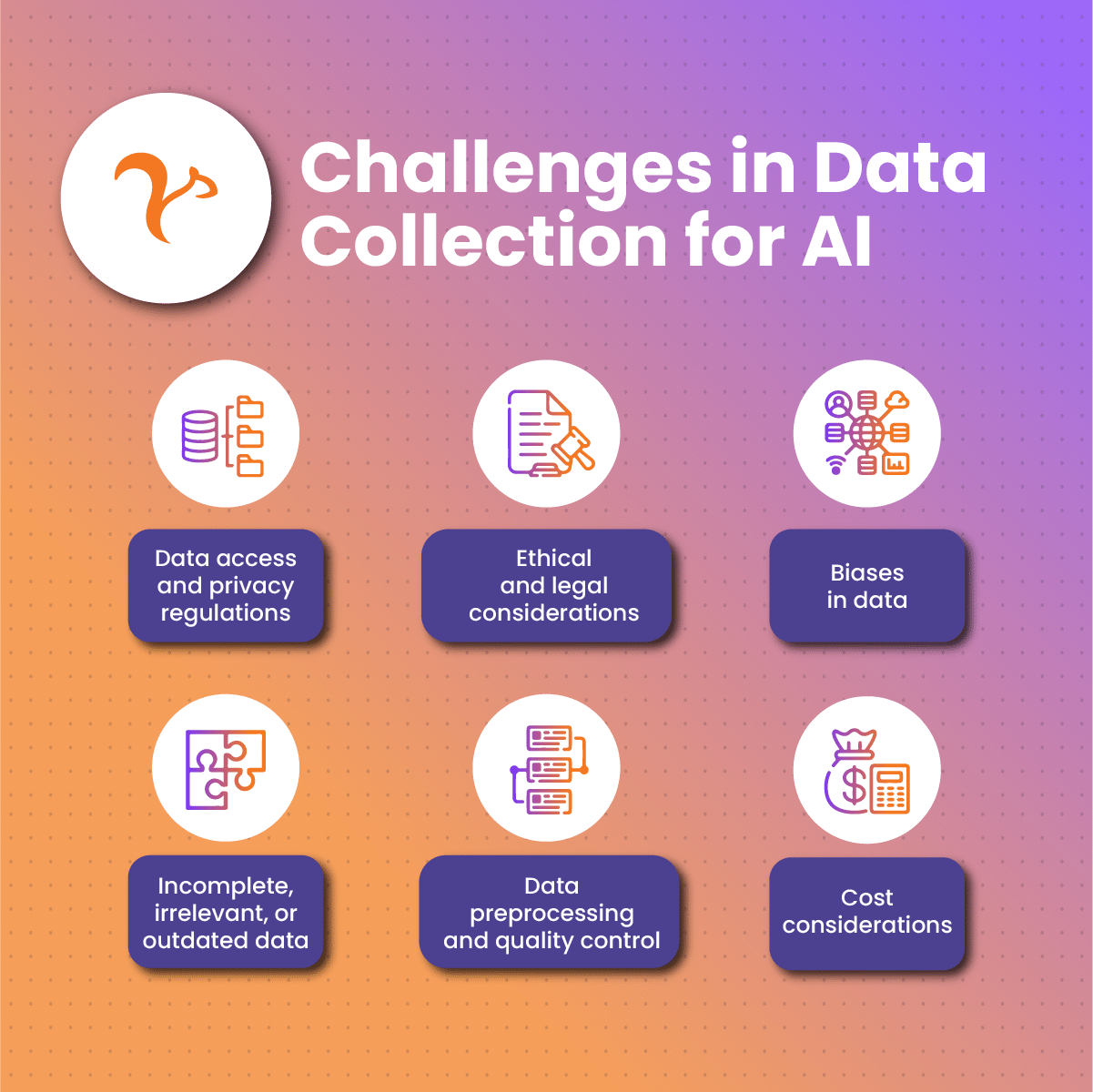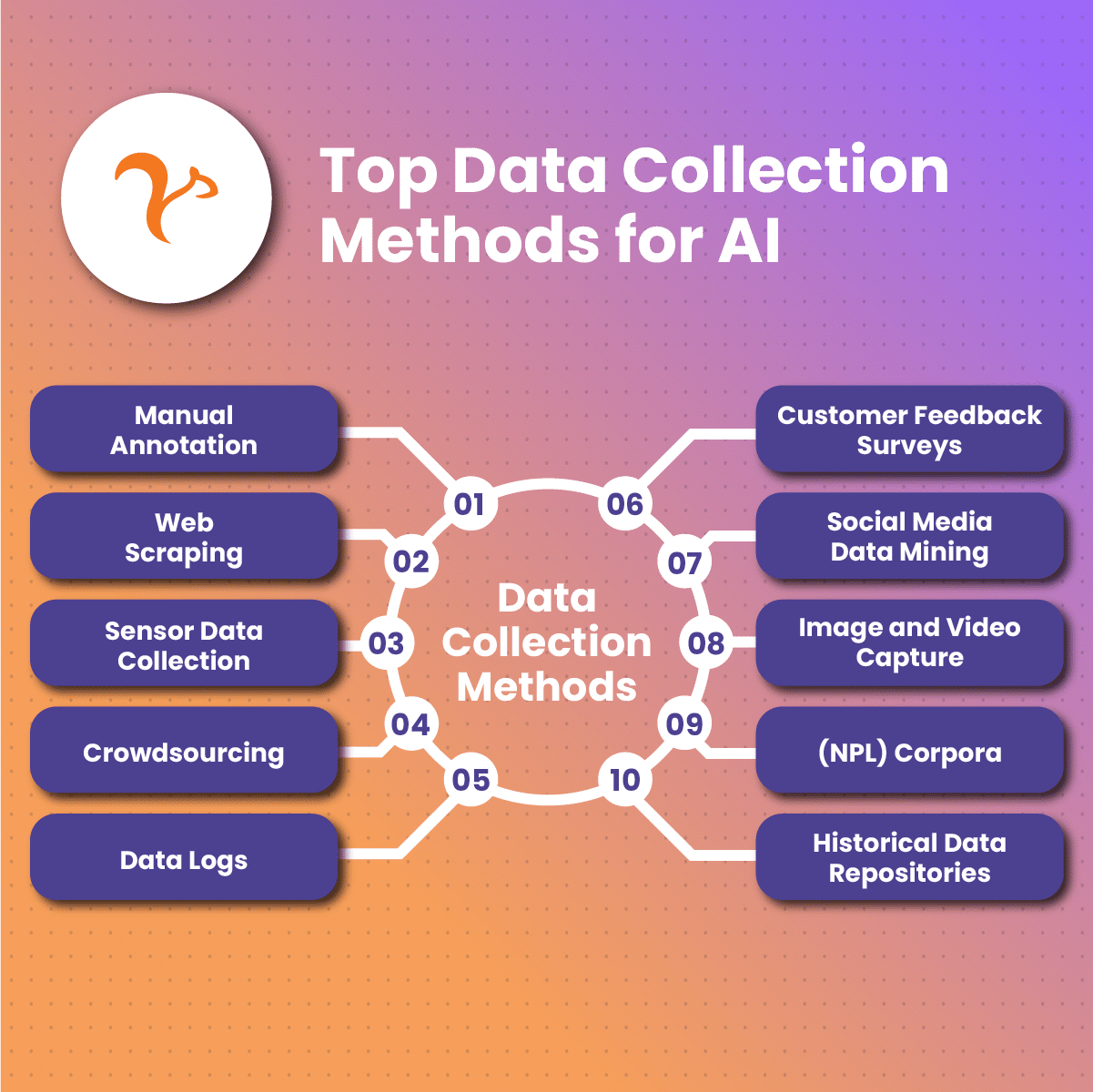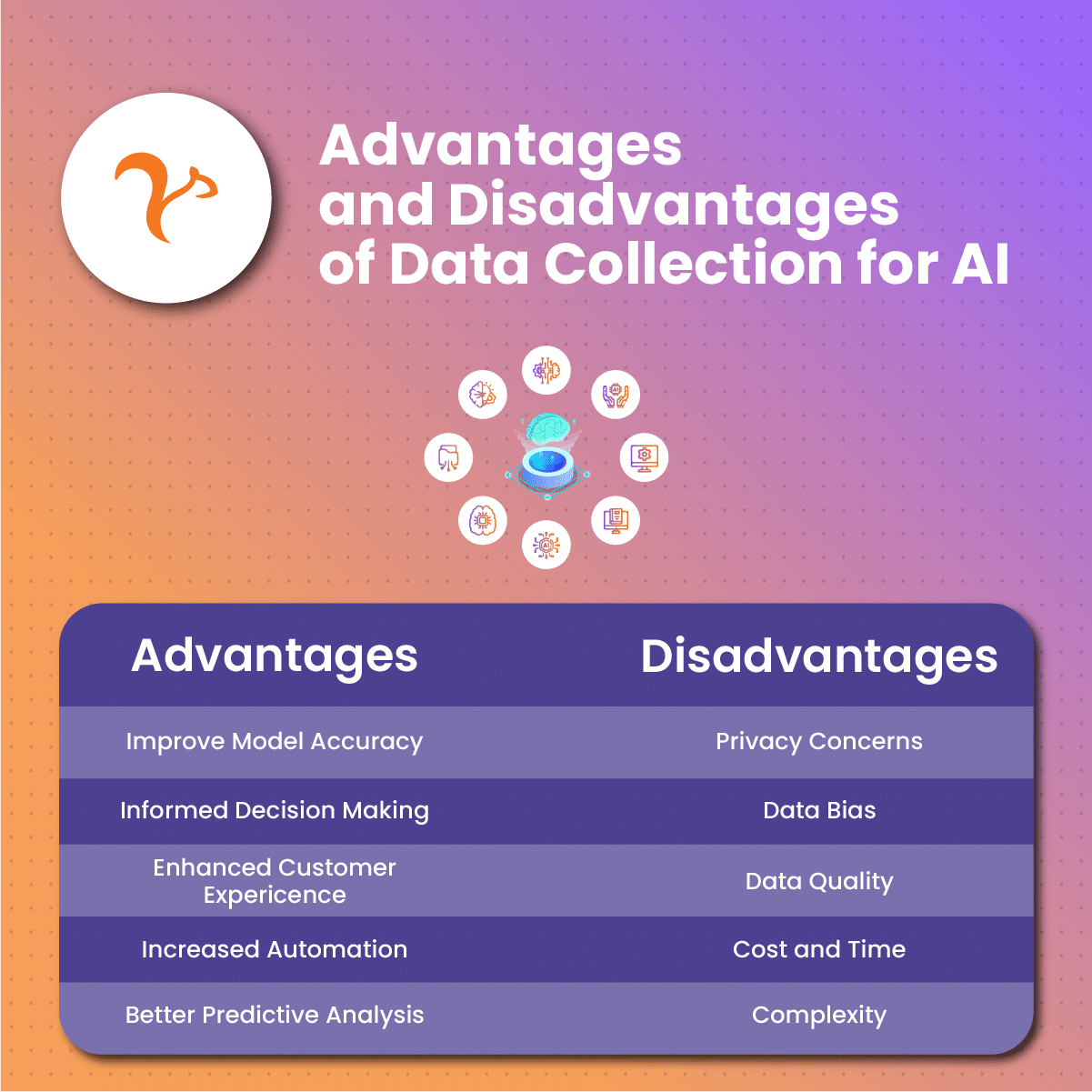Data collection is a critical foundation for the development and deployment of Artificial Intelligence (AI) systems. In an era where AI is driving innovation across various industries, the quality and relevance of the data used to train these models can significantly impact their performance and effectiveness. This article delves into the intricacies of data collection for AI, exploring its importance, methodologies, and the role of AI in enhancing the data collection process itself.
Discover the fundamentals of data collection for AI, including various techniques and best practices to enhance your machine learning projects.
Understanding Data Collection for AI
In the realm of artificial intelligence, data collection for AI refers to the process of acquiring and measuring information from various sources to train and improve machine learning algorithms. Data collection for AI involves gathering large volumes of information from diverse sources to train and refine machine learning models. This process is essential because AI systems rely on data to learn patterns, make predictions, and improve over time. The data collected can come from various domains, including text, images, audio, video, and sensor data, depending on the specific application of the AI model.
To ensure the effectiveness of AI, the data collected must be high-quality, representative, and relevant to the problem at hand. Poor-quality data can lead to biased models, inaccurate predictions, and suboptimal decision-making. Therefore, the data collection process often involves careful planning and consideration of factors such as data diversity, labeling accuracy, and the ethical implications of data usage.
In practice, data collection for AI may involve web scraping, surveys, sensor networks, APIs, and collaboration with other organizations to obtain proprietary datasets. The collected data is then preprocessed, which includes cleaning, filtering, and annotating the data to prepare it for training machine learning algorithms. This preprocessing step is crucial, as it ensures that the AI model receives data in a format that it can effectively process and learn from.
This information can be numerical, categorical, or textual, and comes from an array of sources like online surveys, customer feedback forms, social media, or ready-made datasets.
The Importance of AI For Data Collection
Data Collection for AI is crucial because the quality and quantity of data directly impact the performance and accuracy of machine learning models. AI plays a crucial role in modern data collection by significantly enhancing the efficiency, accuracy, and scale at which data can be gathered and processed. In today’s data-driven world, the volume of information available is immense, and manually collecting and organizing this data is not only time-consuming but also prone to errors. AI-powered tools and algorithms automate much of this process, enabling the collection of vast amounts of data quickly and with greater precision.
The importance of AI in data collection extends beyond automation. AI can identify patterns and trends within large datasets that might be missed by human analysts. This capability allows organizations to uncover insights that drive decision-making and innovation. Moreover, AI helps in maintaining data quality by filtering out irrelevant or redundant information, ensuring that the data fed into machine learning models is clean and useful.
In industries where real-time data is critical, such as finance, healthcare, and e-commerce, AI enables continuous data collection and analysis, providing up-to-date insights that are essential for staying competitive. By leveraging AI for data collection, organizations can better harness the power of big data, leading to more informed strategies and enhanced operational efficiency.
How AI Is Related To Machine Learning and Big Data
AI, machine learning, and big data are interconnected fields that together drive much of the innovation in data science today. AI (Artificial Intelligence) refers to the broader concept of machines being able to carry out tasks in a way that we would consider “smart.” Machine learning, a subset of AI, involves algorithms that allow computers to learn from and make predictions or decisions based on data. Big data refers to extremely large datasets that may be analyzed computationally to reveal patterns, trends, and associations.
The relationship between these fields is symbiotic. AI relies on large datasets—big data—to learn and improve its decision-making processes. Machine learning algorithms, which are a key component of AI, require vast amounts of data to train models that can recognize patterns and make accurate predictions. The more data these models have access to, the better they become at performing tasks, from image recognition to natural language processing.
Big data provides the raw material that feeds AI and machine learning models. With the increasing ability to collect and store massive amounts of data, organizations can use machine learning to analyze this data at scale, uncovering insights that were previously inaccessible. This analysis can then inform AI systems, making them more capable and intelligent over time.
In essence, big data supplies the information, machine learning processes it to create models, and AI uses these models to perform complex tasks that emulate human intelligence. Together, they form a powerful triad that is driving advancements in everything from personalized marketing to predictive analytics and autonomous systems.
How Is AI Used For Data Collection?
AI itself can play a significant role in automating and optimizing the data collection process. Machine learning algorithms can be employed to identify and gather relevant data from vast and unstructured sources, significantly reducing the time and effort required to compile comprehensive datasets. For example, AI-driven web scraping tools can efficiently extract data from websites, social media platforms, and other online sources, automatically filtering out irrelevant information and focusing on the most pertinent data points.
Moreover, AI can enhance the accuracy and efficiency of data labeling, which is a critical component of preparing datasets for supervised learning models. Through techniques such as active learning, AI can intelligently prioritize which data points need labeling by a human annotator, thus minimizing the workload and improving the quality of the training data.
AI can also be used to continuously update and enrich datasets, ensuring that the data remains relevant and up-to-date. This is particularly important in dynamic environments where the underlying data changes frequently, such as in financial markets, e-commerce, or social media. By leveraging AI for data collection, organizations can not only streamline the process but also achieve a higher degree of precision and relevance in the data they use to train their models.
In addition to these benefits, AI-driven data collection methods can help mitigate the risks associated with manual data collection, such as human error, bias, and inefficiency. By automating repetitive and complex tasks, AI enables researchers and developers to focus on higher-level analysis and model development, ultimately leading to more robust and accurate AI systems.
Challenges in Data Collection for AI
Data Collection for AI is not without its obstacles. Several challenges need to be addressed to ensure the data is useful and reliable for AI applications.
Data access and privacy regulations
Data privacy is a major concern when collecting data for AI applications. Organizations must adhere to regulations like GDPR or HIPAA to ensure the data they collect is handled ethically and securely.
Ethical and legal considerations
When collecting data, organizations must respect individuals’ privacy and ensure that the data collected does not violate any ethical or legal guidelines. Ignoring these considerations can lead to expensive lawsuits and damage the organization’s reputation.
Biases in data
Biases in the collected data can lead to skewed or inaccurate AI models. To avoid this, organizations must ensure that the data is representative of the entire population and not just a specific segment.
Incomplete, irrelevant, or outdated data
Data Collection for AI should focus on gathering complete, relevant, and up-to-date data. Incomplete or outdated data may lead to incorrect predictions or decision-making.
Data preprocessing and quality control
Raw data is often noisy, inconsistent, or filled with errors. Data preprocessing and quality control are essential steps to clean, transform, and organize the data, ensuring it is suitable for AI applications.
Cost considerations
Data collection can be expensive, especially if it involves hiring specialists or purchasing data collection equipment. Organizations must consider the costs and allocate resources accordingly to avoid exceeding budgets.
Differentiating Data Collection from Related Concepts
Understanding the differences between data collection and other related concepts is crucial to avoid confusion when discussing AI and machine learning.
Data collection vs. data mining
While data collection involves gathering information from various sources, data mining focuses on extracting and identifying patterns in large datasets using mathematical models.
Data collection vs. web scraping
Data collection encompasses both online and offline methods for gathering data. In contrast, web scraping is a technique used to extract information from websites and online sources only.
Data collection vs. data extraction
Data extraction is the process of turning unstructured or semi-structured data into structured data, whereas data collection focuses on acquiring the data itself.
Top Data Collection Methods for AI
Several methods can be employed to collect data for AI applications, each with its advantages and limitations.
Prepackaged data
Prepackaged data involves purchasing third-party data, which can save time but may require customizations, API integrations, and additional resources to make it suitable for AI applications.
Public crowdsourcing
Crowdsourcing involves collecting data, such as images or text, with the public. This method can be cost-effective and efficient but may not be suitable for sensitive or confidential data projects.
Private sourcing
Private sourcing is a method in which AI/ML developers collect their own data privately instead of relying on the general public. This method can involve working with organizations that have a large group of private specialists to gather data with higher skills and discretion. Although it can offer better control over data quality, private sourcing can be time-consuming when done manually and in-house.
Automated data collection
Automated data collection uses software to gather data from online sources automatically. Techniques such as web scraping, web crawling, and using APIs can be employed for automation. While this method can improve data collection accuracy, it can only be used for secondary data collection and not for primary data collection.
By understanding the various data collection methods and addressing the challenges involved, organizations can effectively harness the power of data to train and improve AI and machine learning applications. As data continues to play a crucial role in AI development, adopting the right data collection strategies will be vital for organizations to stay competitive and achieve their AI goals.
Prepackaged data
Pros and cons
Prepackaged data is third-party data collected and sold by data providers. While it can save time and resources in the data collection process, it may require customization, integration, and additional coding, which can be time-consuming and costly.
Integration and customization
Integration of prepackaged data involves creating APIs and adjusting data formats to fit the specific requirements of your AI project. Customization ensures that the data is relevant and useful for the specific AI model being developed.
Public crowdsourcing
Examples and benefits
Public crowdsourcing involves working with the general public to gather data. For instance, an image recognition system may need images of road signs collected by the public. This method can be cost-effective, and it can help collect a diverse dataset that represents real-world situations.
Limitations and data sensitivity
However, public crowdsourcing may not be suitable for projects involving sensitive or confidential data. Additionally, data quality may vary, and ensuring consistent data quality can be challenging.
Private sourcing
Examples and use cases
Private sourcing entails collecting data in-house or working with organizations that have a large group of private specialists to gather data. This method can be employed in cases where sensitive information, such as healthcare data or financial records, needs to be collected.
Time constraints and efficiency
While private sourcing offers better control over data quality, it can be time-consuming and labor-intensive, especially when done manually and in-house.
Automated data collection
Web-scraping, web crawling, and APIs
Automated data collection uses software tools like web scrapers, web crawlers, and APIs to gather data from online sources. These tools can help collect large amounts of data quickly and accurately.
Pros and cons
Automation can improve the accuracy and efficiency of Data Collection for AI. However, it may not be suitable for collecting primary data or data that requires human judgment and context.
Limitations for primary data collection
Automated data collection is best suited for secondary data collection. It may not be effective in gathering primary data, which often requires human input or interaction.
Tips for Effective Data Collection in AI
Defining data needs and project scope
Clearly outline your data requirements and project scope to ensure that the collected data is relevant and useful for your AI application.
Ensuring data quality and consistency
Implement practices and tools to maintain data quality and consistency throughout the data collection process.
Balancing costs and benefits
Consider the trade-offs between various data collection methods, keeping in mind the costs, time, and resources required.
Leveraging technology and tools
Use appropriate technology and tools to automate and streamline the data collection process where possible.
Case Studies: Successful Data Collection for AI Projects
Examples of companies implementing data collection for AI
Companies like Google, Amazon, and Facebook have successfully implemented Data Collection for AI to improve their products and services. These case studies can provide valuable insights into best practices and lessons learned.
Lessons learned and best practices
Successful AI projects often emphasize the importance of high-quality data, careful planning, and leveraging technology to improve data collection efficiency.
Resources and Further Reading
Data collection services and vendors
There are numerous data collection service providers and vendors that can assist with Data Collection for AI projects, such as Clickworker and Netnut.
Guides for evaluating data collection methods and tools
To help you choose the right data collection method and tools for your AI project, there are various guides and resources available online.
Additional resources on data collection for AI
Additional resources on Data Collection for AI can be found in online courses, webinars, and whitepapers that provide deeper insights into the process and its intricacies. Industry experts and AI researchers often share their experiences and knowledge on data collection, making it a valuable resource for learning and improvement.
Advantages and Disadvantages of Data Collection for AI
Advantages of Data Collection for AI
- Improved Model Accuracy: High-quality and diverse data help in training AI and machine learning models to be more accurate and efficient, leading to better results.
- Informed Decision Making: Data collection for AI enables businesses to make data-driven decisions, leading to improved strategies and increased chances of success.
- Enhanced Customer Experience: AI models trained on comprehensive data sets can provide personalized and targeted experiences for customers, resulting in higher customer satisfaction.
- Increased Automation: Data collection for AI allows businesses to automate various tasks and processes, leading to higher efficiency and reduced manual labor.
- Better Predictive Analysis: AI models trained with accurate data can provide better predictions, helping organizations anticipate trends, changes, and potential issues.
Disadvantages of Data Collection for AI
- Privacy Concerns: Data collection for AI might involve collecting sensitive information, raising privacy concerns and potential legal issues.
- Data Bias: Data used for training AI models can be biased, which may lead to discriminatory or unfair results.
- Data Quality: Ensuring the quality and relevance of collected data is a challenge, and low-quality data can result in poor AI model performance.
- Cost and Time: Data collection for AI can be expensive and time-consuming, especially if done manually or if large volumes of data are required.
- Complexity: Managing and processing vast amounts of data for AI can be complex, requiring specialized skills and resources.
Comparison Table of Advantages and Disadvantages
| Advantages | Disadvantages |
| Improved Model Accuracy | Privacy Concerns |
| Informed Decision Making | Data Bias |
| Enhanced Customer Experience | Data Quality |
| Increased Automation | Cost and Time |
| Better Predictive Analysis | Complexity |
By considering the advantages and disadvantages of Data Collection for AI, organizations can make informed decisions about the best methods, tools, and strategies to adopt for their AI projects.
Resources
-
What Is Data Collection in Machine Learning? : The article explores the concept of data collection within the realm of machine learning. It aims to provide an understanding of what data collection entails and its significance in training machine learning models.
- Data Collection for AI: This article provides an overview of data collection for AI and includes information on how to collect data, the types of data that can be collected, and more.
-
Data Collection for Machine Learning and AI: The article discusses the critical process of gathering data for training machine learning and artificial intelligence (AI) systems. It likely covers the importance of high-quality and diverse datasets in achieving accurate and robust models.
- Data Collection for Machine Learning (ML) Models: This article provides an overview of data collection for machine learning models and includes information on how to collect data, the types of data that can be collected, and more.
- Data is the lifeblood of AI, but how do you collect it?: The article discusses the importance of data in artificial intelligence and how to collect it effectively for AI projects. It also covers various techniques and best practices for data collection, including the use of machine learning to automate the process, the importance of data quality, and the need for diverse data sources.
